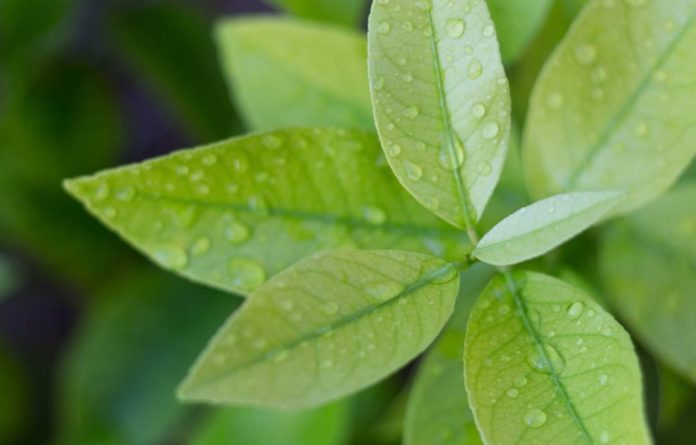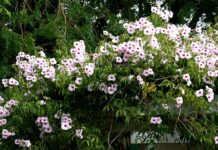
Lemon tree flowers are the most well-known flowers. When you look at a garden you usually see not only flowers but also trees. There is a specific type of tree that exists almost in every garden and that is the lemon tree with its lovely flowers.
Lemon trees do not only produce aromatic blossoms with beautiful green leaves and yellow fruits but these fruits have also vitamins, antioxidants, and minerals. These characteristics make them perfect because you can make your drinks (the famous lemonade) or use the lemons while preparing your food.
It is said that the origins are from Asia and then became famous all around the world. What is great about the lemon tree is that it does not need a lot of care. This makes it ideal for your garden.
Lemon Tree Flowers & Climate
Some lemon tree flowers produce different kinds of lemons. They can be large, small, and sweet and some of them can be used in order to make tarts. The climate that they need isn’t supposed to be a very hot one.
They grow better in coastal areas. If they are found in temperatures below 32 degrees Fahrenheit they might be damaged. Lemon-tree flowers best grow in the U.S. Department of Agriculture plant hardiness zones 9 through 11. All the varieties are hardy.
Soil Mix-Lemon Tree
As we mentioned before lemon trees do not need a lot of care. They are tolerant to different ranges of soil mixes. If the plant grows on its own roots or if you place it to a true genus Citrus rootstock the pH could be 5.5.-7.0 which makes it acceptable and might reach pH 6.0-6.5 which makes it the best.
If the pH of the lemon tree flowers is more than that then the tree will lack minerals. Some of them might be zinc, manganese, and iron. If this happens then you should enrich the soil with compost. In case the pH is more that we mentioned above then add sulfur (or sulfur compound).
If the pH of the lemon tree flowers is less than that then the tree will grow. There is one drawback though; the tree won’t grow any new leaves and even flowers. This will have as a result that there won’t be any lemons.
If this happens then add a few tablespoons of limestone (mix it with soil first) and then the pH level will be just perfect. Your lemon tree flowers need around 20-24 inches (50-60cm) of the soil. They also need good draining. In case your soil isn’t twenty inches then you can grow smaller mixture of lemon trees.
Types of Lemon Trees
There are some well-known types of lemon tree flowers, the Eureka, the Lisbon, the Ponderosa and, the Meyer. The Meyer has another category and that is the dwarf Meyer lemon tree which is a lovely variety too.
The Eureka Lemon Tree
The Eureka lemon tree is a type of lemon tree flowers that gives lemons throughout the year. It needs a warm climate in order to produce seedless lemons which will have a thin skin. The particular variety doesn’t have any thorns.
There is a specific type “Variegated Pink” (Citrus x limon = Variegated Pink). This particular variety produces lemons with a pale pink flesh and the leaves of the tree have cream and green color.
Lisbon Lemon Tree
The Lisbon lemon tree is the only variety that can tolerate both cold, heat, and the wind. It is the most common tree variety and it grows in the U.S. Department of Agriculture plant hardiness zones 9 and 10. It requires a lot of sun in order to fully grow and it can be 30 feet tall. It needs a lot of watering too and the best period to prune would be during the winter. This variety produces large lemons too.
The Meyer Lemon Tree
The Meyer lemon tree is a mixture of Citrus x Meyeri. This particular variety is a type of mixture between lemons and oranges. It has a golden yellowish color and it is sweeter compared to the typical lemons. It is said that it is a mixture of lemons and mandarin orange.
The Meyer lemon tree were discovered in China in 1908. In order to grow they need 22 degrees and they best grow in zone 8. They need a lot of sun and water in order to fully grow and they will grow between 6 to 10 feet tall.
You will be able to harvest your delicious lemons during the winter. During the spring the tree will give you amazing blossoms that will attract the bees (which could be either good or bad, it depends on you). The best season to plant this tree would be from late winter to spring.
The Dwarf Meyer Lemon Tree
The Dwarf Meyer lemon tree is perfect for you in case you don’t have a garden. Its height is between 4-6 feet and it can fit in a pot. You can either keep it in a pot or plant it in your garden if you have one. It grows best in the 9 and 10th zone.
It gives medium-sized lemons which have a thin skin and their color tend to be more yellowish. It produces aromatic blossoms that bloom during springtime. If you are not in zones 9 to 10 make sure that you are going to move it indoors in order to protect it.
Ponderosa Lemon Tree
Ponderosa lemon tree is another variety of dwarf lemon tree. It was discovered in the 1880’s and it best grows in zones 9 to 11. The lemon tree flower can either be planted in your garden or you can keep it in a pot. If you keep it in a pot indoors make sure that there is plenty of sunlight.
The particular tree gives fruits that have the size of a grapefruit and they are quite acidic in taste. You should water it enough so as to moisten the soil. It might need to be watered once or even twice per day depending on how hot the temperature is.
Growing Temperature
Lemon-tree flowers need warm climates. The temperatures could be from 21-38°C and the best one would be 29-30°C. The particular type of tree will stop growing if it reaches 40°C and above 50°C, it will not give any flowers or blossoms. Below 30°C, the tree will drop its leaves and it will be totally damaged.
The Conclusion is:
There is a variety of lemon tree flowers. It is up to you to decide whether you want to have one in your garden or have one indoors. Have in mind the zone that you are in and provide the best care to your lemon tree flowers because you want to have a perfect tree.
Choose wisely and you will be able to enjoy fresh lemonade whether you sit in your garden or your patio. Don’t forget that the soil and the compost play a significant role and the sun and the water too. Make sure to take care of your beautiful lemon tree because even though it is everywhere it produces a unique fragrance.







![Rose Names And All Rose Types – The Most Detailed Guide [2022] rose names](https://www.yardious.com/wp-content/uploads/2018/05/rose-names-100x70.jpg)











